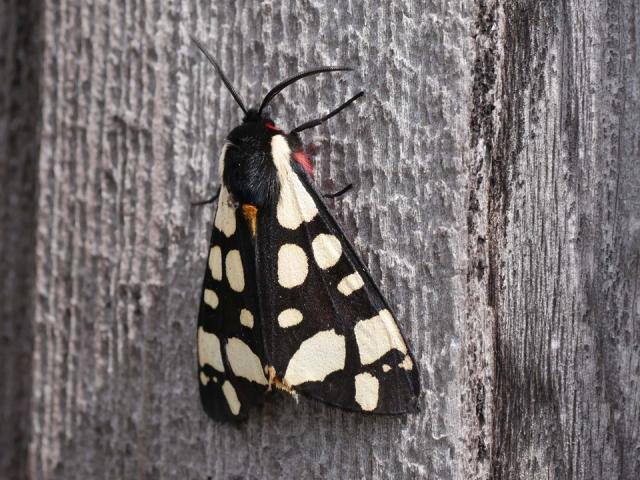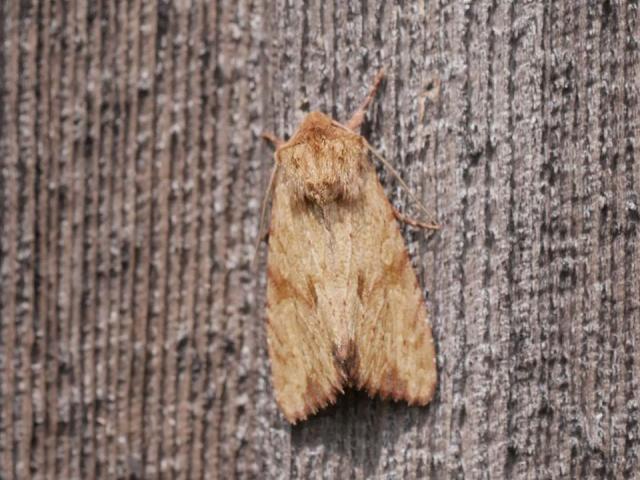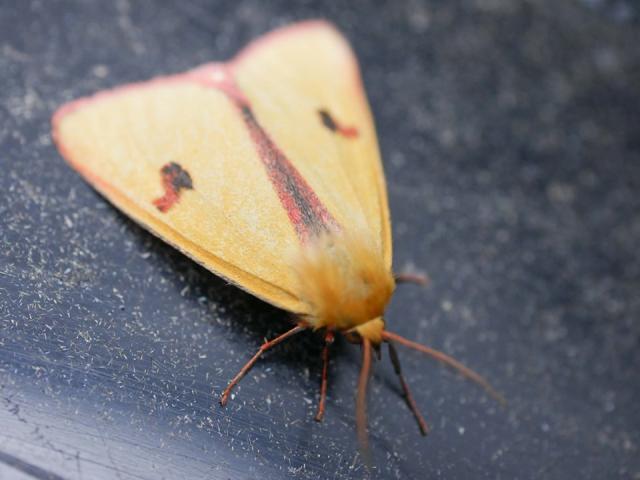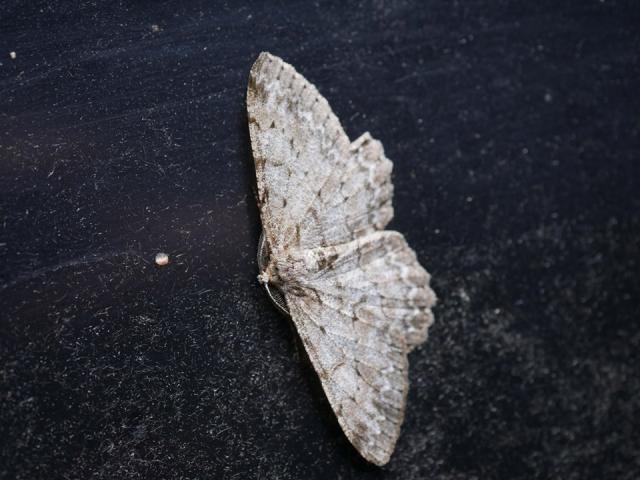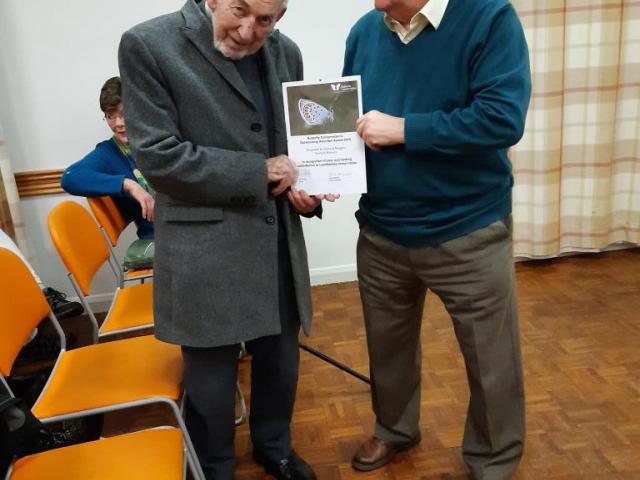
2019
Roland Rogers receives Outstanding Volunteer award
Here is Bernard Watts presenting Roland Rogers with his Outstanding Volunteer award - awarded by Butterfly Conservation following nomination from the Branch for his lifelong service to BC. The presentation took place at the Norwich indoor meeting on 22nd November 2019

Members' Day and AGM 2019
Once again as we reach the end of the main butterfly season we reflect on the highlights and events of the 2019 season so far.
Each AGM we aim to provide our members with a day which inspiring and informs them. This year we achieved this with two brilliant speakers.
Our first speakers were the brilliant Butterfly
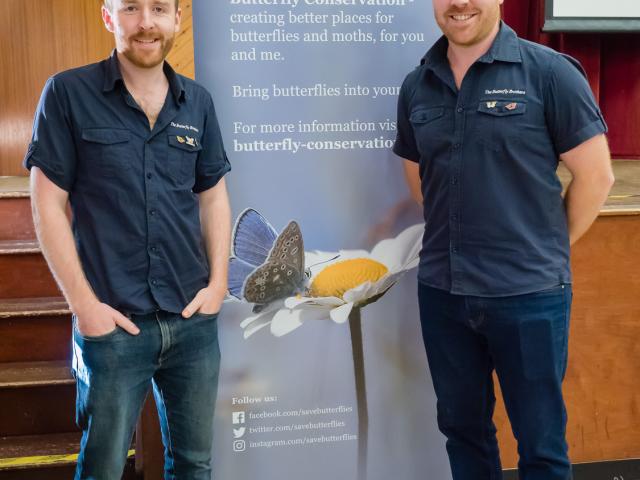
Brothers with an illustrated talk entitled 'Wildlife Gardening'. The brothers Jim and Joel Ashton talk showed how they convert a small urban garden or a large country garden to a wildlife haven. The brothers gave us an inspiring talk about how we can all adapt our gardens to support wildlife. I'm sure many of those who attend will be busy redesigning their garden with many simple & easy to do tips for gardens of all sizes & shapes. The members had many interesting questions for the brothers which they answered demonstrating their depth of knowledge and passion for wildlife and helping people. The one piece of advice that they gave was build a pond which provide both habit and water for so many species. Find out more about the Butterfly Brothers at Hazelwood Landscapes.
Our second speaker was Tony Erwin with an illustrated talk entitled 'Pinned for posterity - Butterflies and
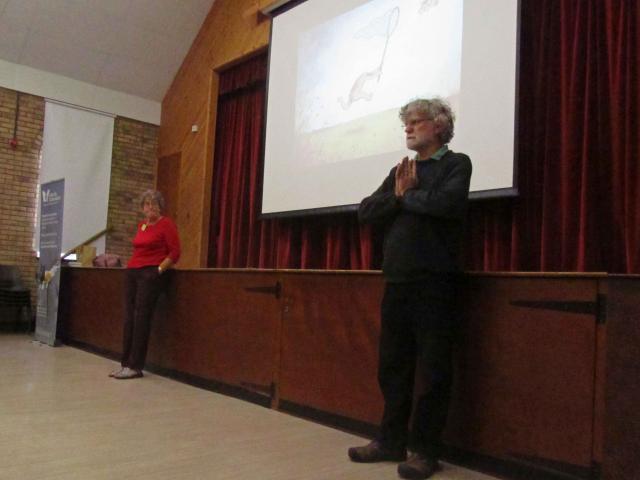
Museums'. Tony was a former Senior Curator of Natural History at Norfolk Museums' Service and now retired he still volunteers at the museum. Tony explained the importance of the butterfly and other species collections held by Norfolk museums and how they are continued to be used today. He also explained how the ethics of collecting has change the effect is has on research today.
As usual we held our Annual Photography Competition. Once again we receive very high quality photographs and those attending the meeting voted for the winner of each category. Each winner received a book on wildlife gardening.
Winner of 'UK butterflies and moths including immature stages'. Harry Faull - Meadow Brown
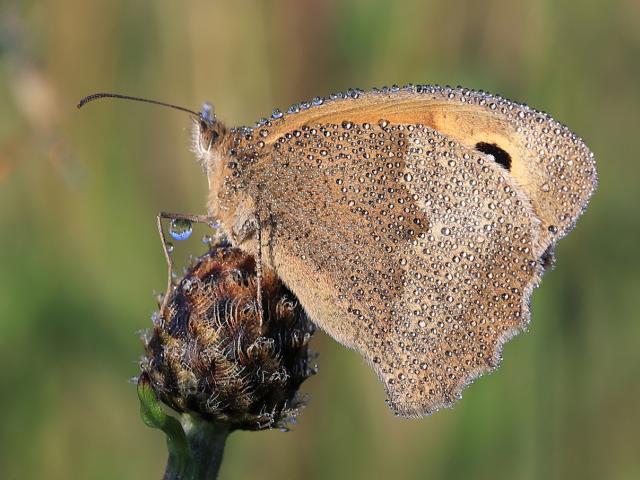
Winner of 'Overseas butterflies and moths including immature stages'. Stephen Burrell - Black-veined Whites
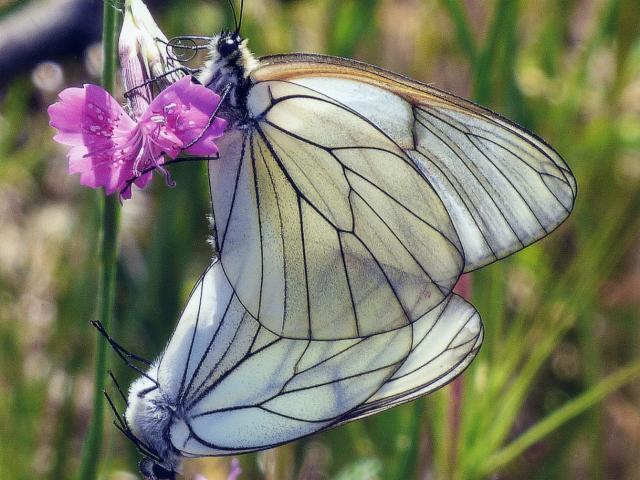
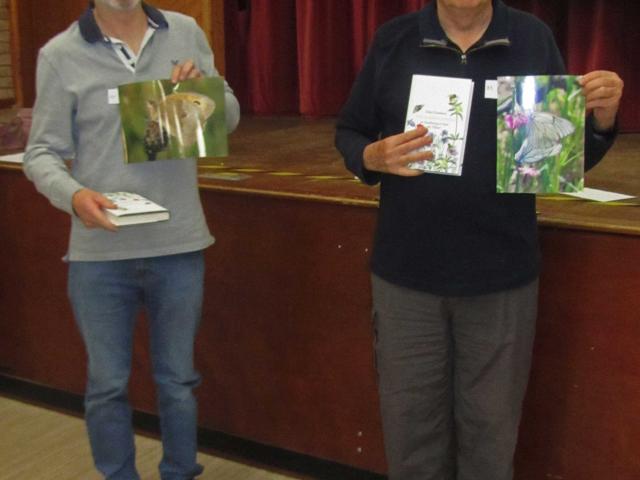
Below are other photos from the Members' Day
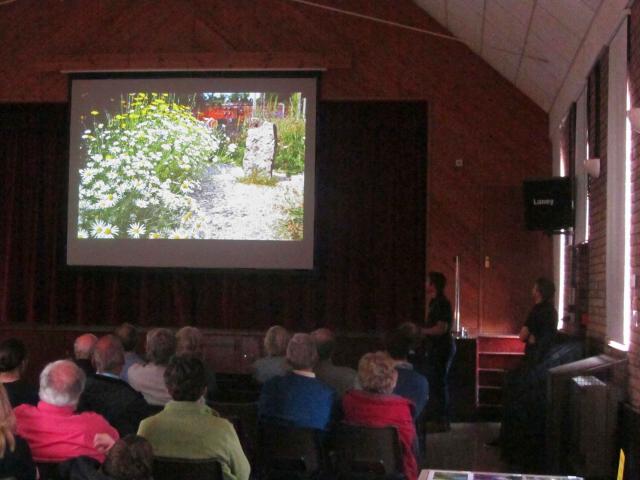
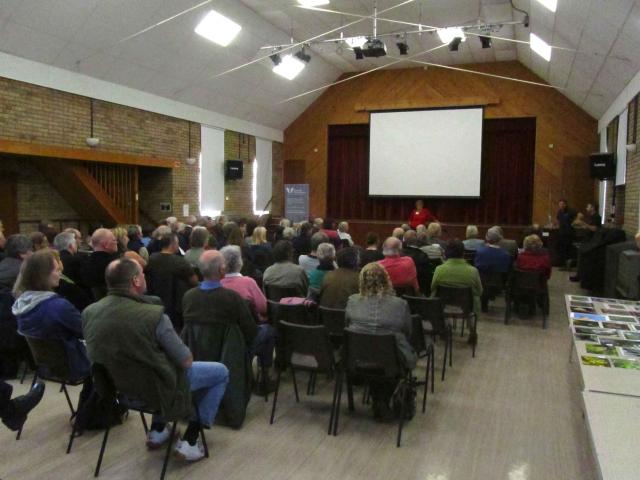
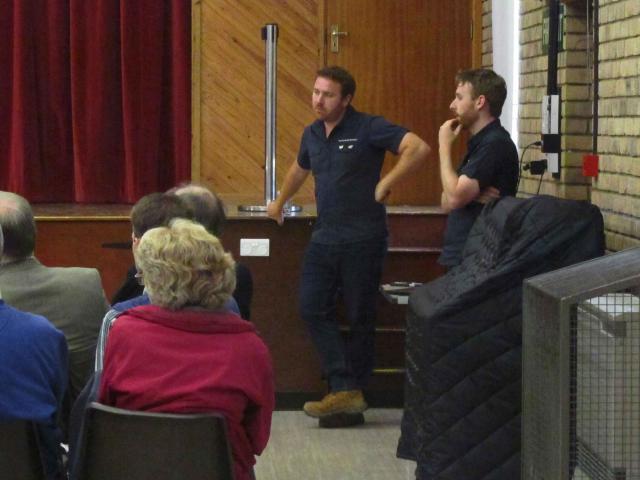
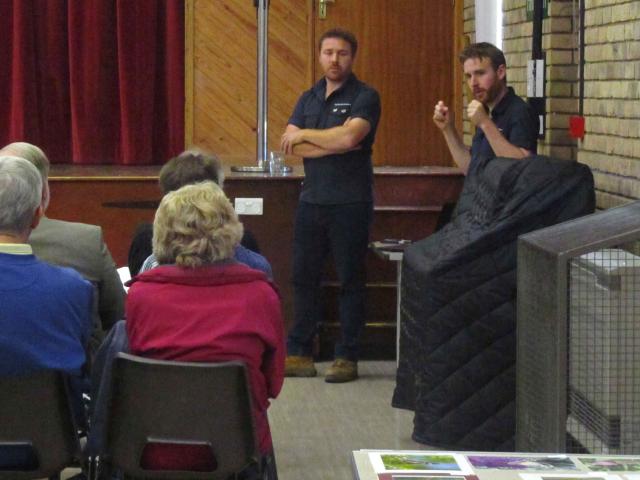
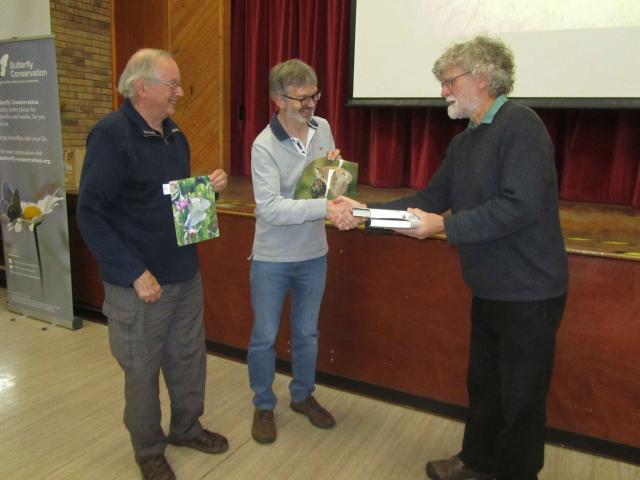
Photo Norfolk AGM 2019 Butterfly Brothers by Kiri Stuart-Clarke
All other photos by Derek Longe
Annual Chalkhill Blue Count at Warham Camp 5th August
Four of us (Derek Longe, Judith Wells, Alan and Jen Dawson) went and did the annual count of Chalkhill Blues at Warham Camp today (5th August). The weather was dullish and breezy but warm and there were lots of other butterflies (huge numbers of Painted Lady and quite a few Wall Browns). We counted 268 male and 15 female Chalkhills – around the average for the last four years. At the population peak would expect about 10:1 males to females, so it may be that the peak population has not yet been reached.
Report by Alan Dawson
Photos by Derek Longe
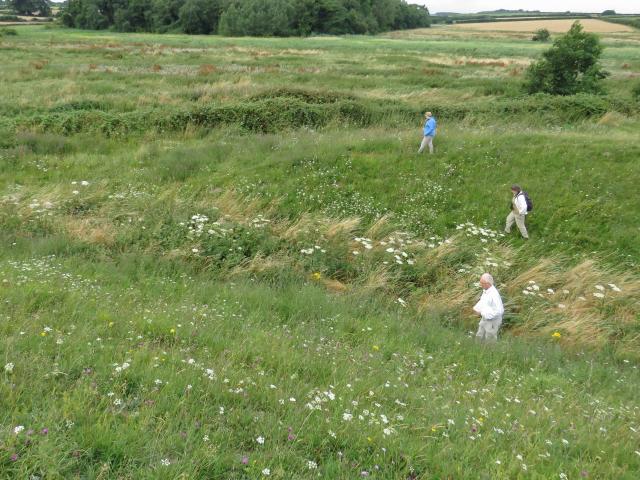
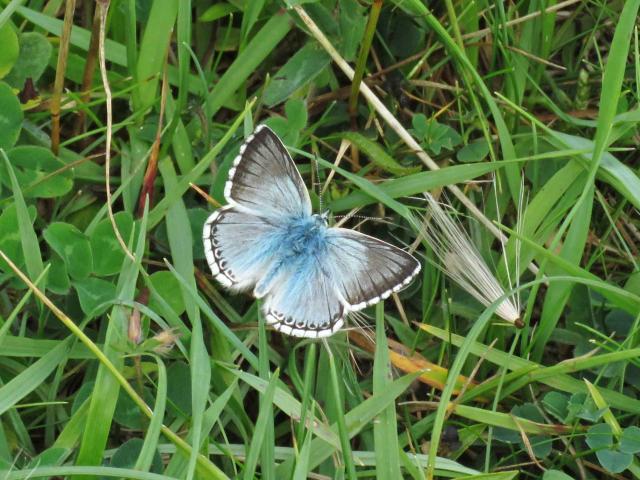
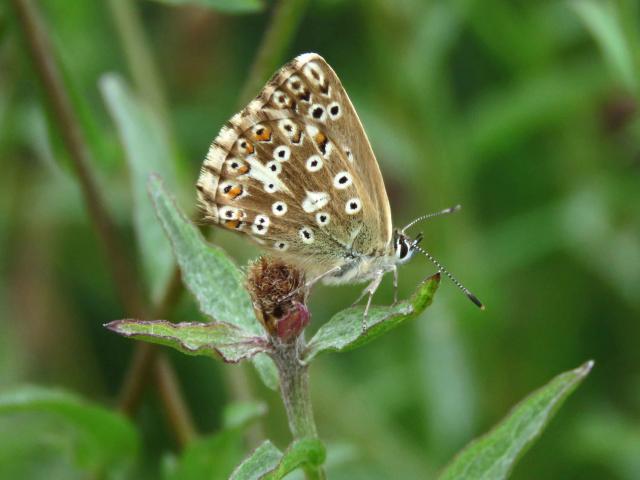
Tyrrells Wood 1st August Field Trip Report.
A hardy group of 14 assembled in the car park at 11 to be greeted with brisk shower and a hasty retreat to our cars. Fortunately it soon passed and we began with a new species for the site, as Martin Greenwood found a White-letter egg on an elm by the entrance to the wood. This was quickly followed by Vapourer moth and Purple Hairstreaks in the car park. Our target for the trip was to see if Silver-washed or White Admiral had yet moved this far south, but our initial hopes started to fade as the day wore on. We had a lot of Green-veined Whites, and a sprinkling of Speckled Wood, Gatekeeper, Holly Blue, Meadow Brown and Peacock. Ringlet, Comma and Large White brought our total up to 11 species, but it wasn't until the return leg and almost back to the car park before a male Silver-washed obliged by turning up and briefly posing on some bramble. Success, and not only a new species for the site but a first for the whole TM28 10km square. (and incidentally the 150th Norfolk tetrad for the species!) In celebration we were then treated to a brief fly past by another silver-washed in the car park as everyone was getting ready to leave. Sadly no White Admiral (or Purple Emperor!) but it can only be a matter of time before they turn up.
Report by Andy Brazil
Photos by Derek Longe
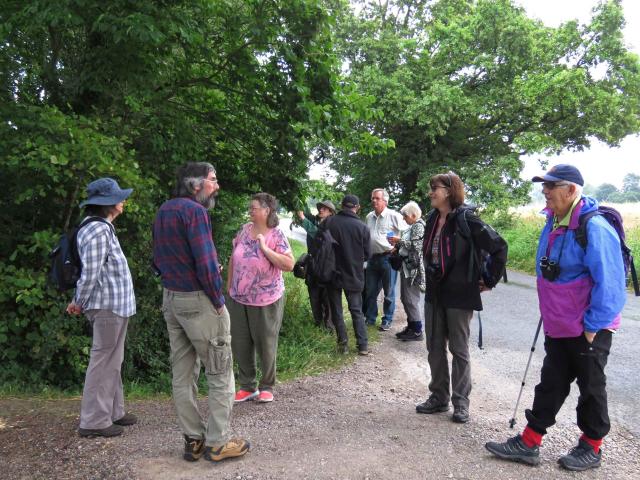
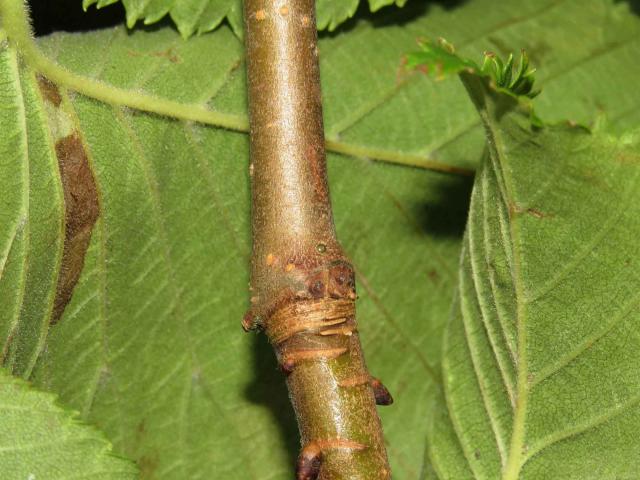
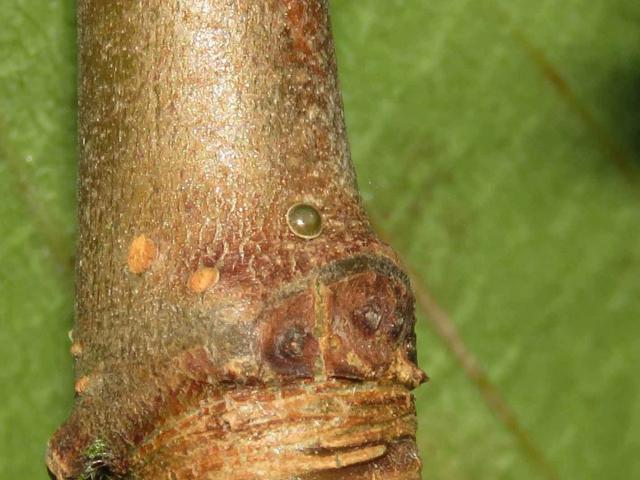
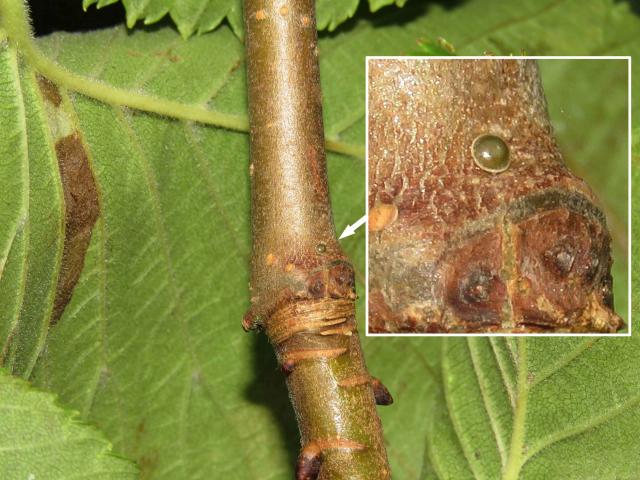
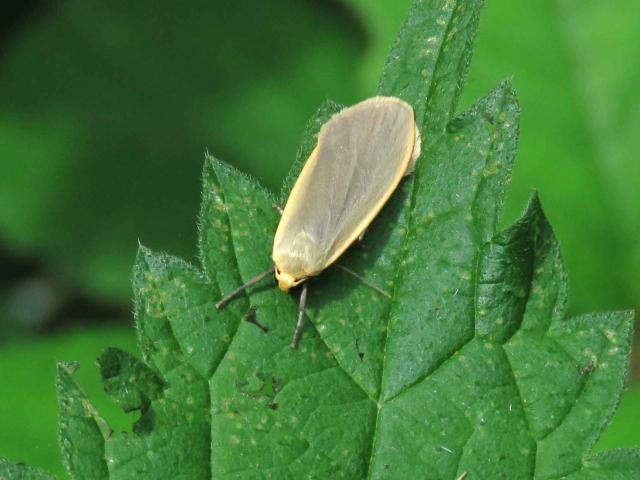
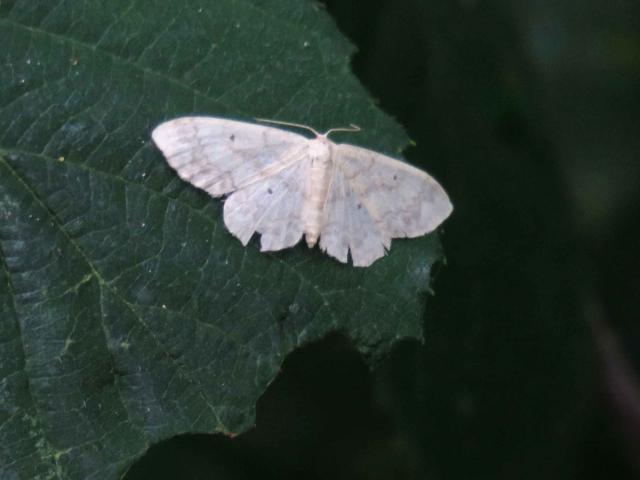
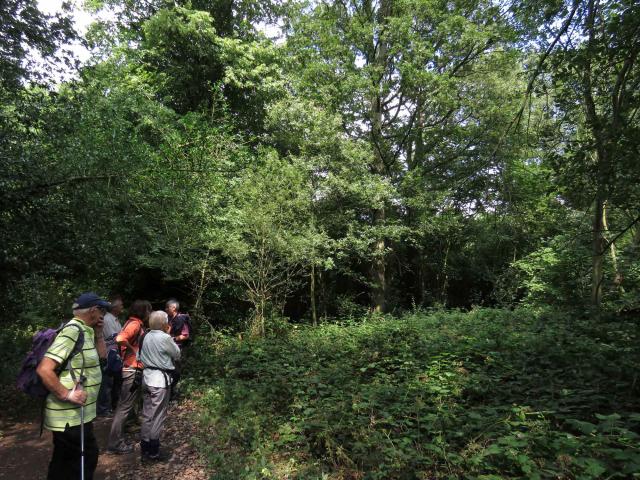
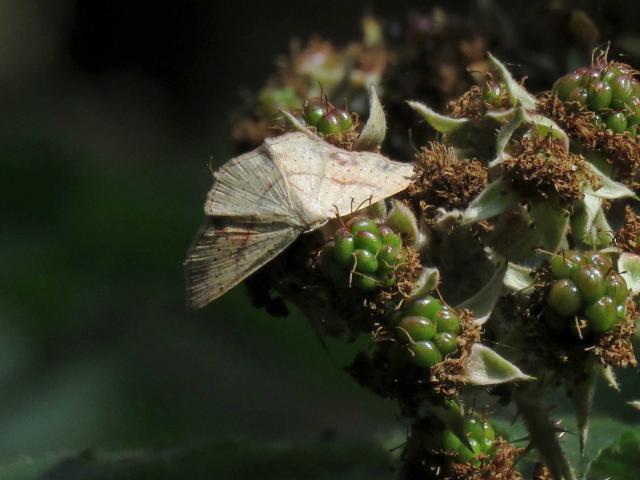
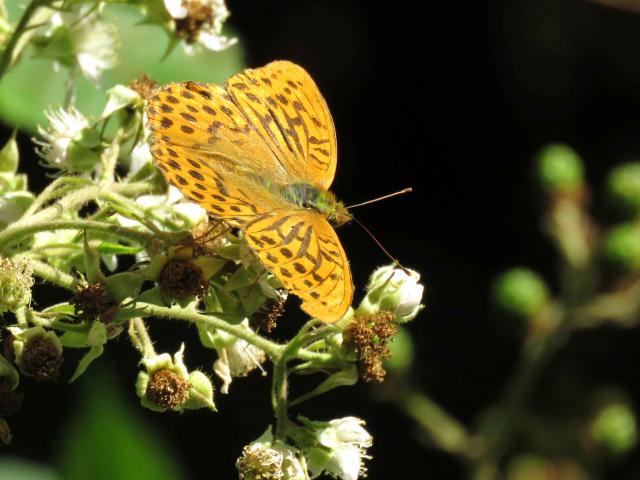
Holt Country Park 11th July 2019 Field Trip Report
The field trip to Holt Country Park was blessed with excellent weather although the butterflies were scarcer than previously. The sixteen people attending had good views of Silver-washed Fritillary and an excellent opportunity to photograph a basking White Admiral. The afternoon walk onto Holt Lowes was less fruitful as we failed to find Grayling or Small Heath; it is possible that these species suffered in the very hot weather last July. Even though we searched the tops of the oak trees we couldn’t find any Purple Hairstreaks but in compensation there were plenty of Keeled Skimmers on the small ponds. In total 10 butterfly species were recorded.
Report by Judy Dunmore
Photos by Derek Longe
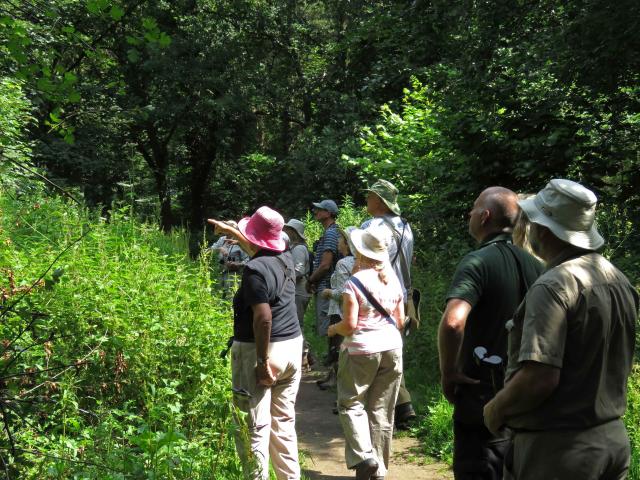
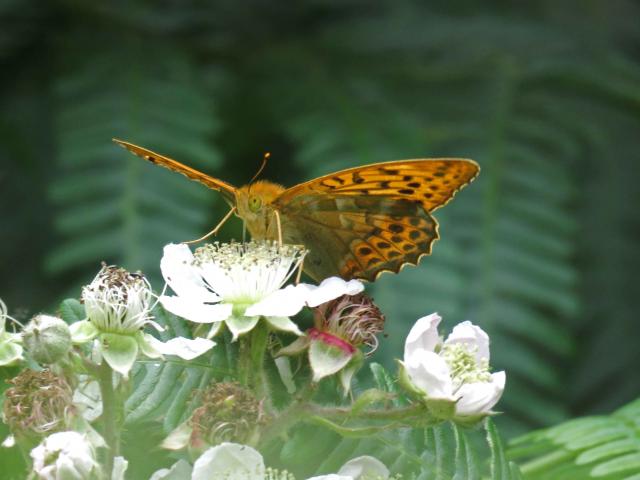
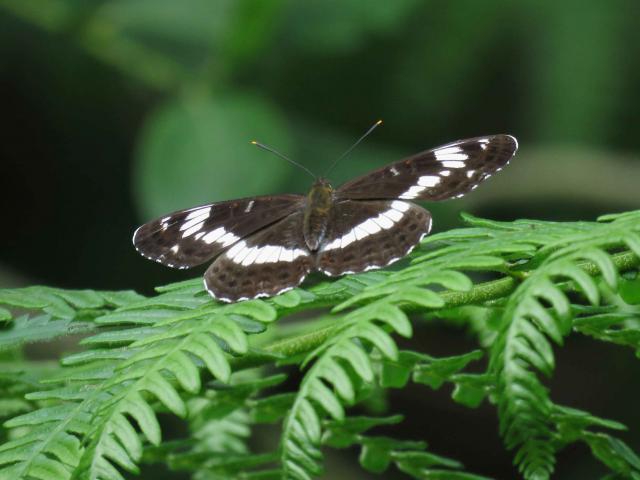
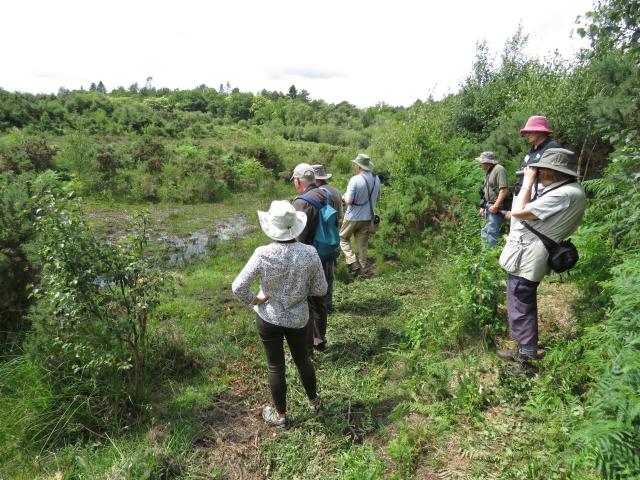
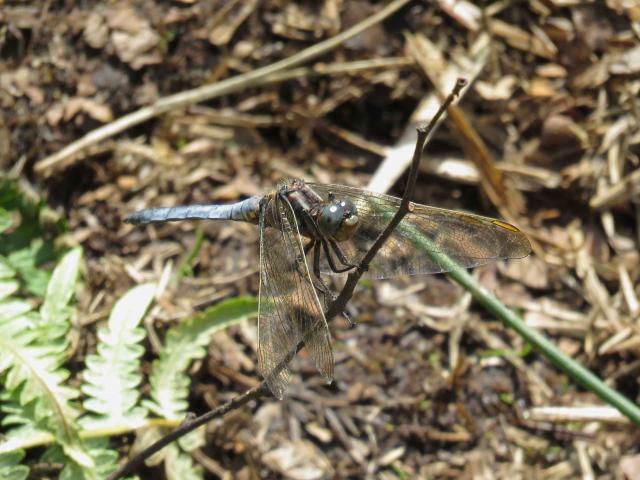
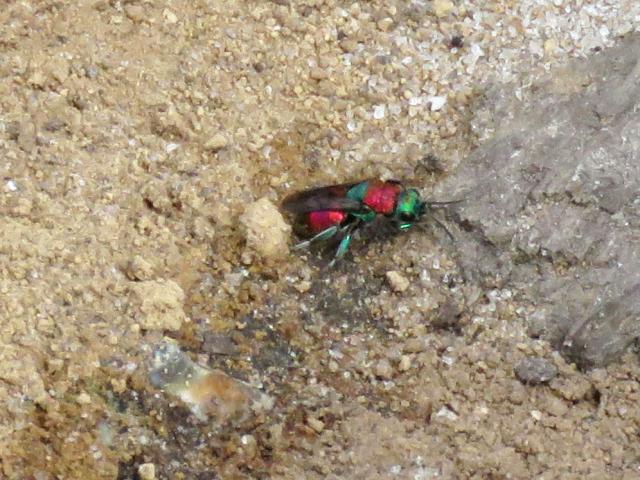
Marbled Whites at Cranwich Health 7th July 2019
Report by Derek Longe
Derek was amazed to find Marbled Whites at Cranwich Camp last Sunday sometime after the field trip had ended. First one seen eventually settled down after staying airborne for several minutes a couple of times allowing a closer look. It then flew towards a hedge where it interacted with another Marbled White so Derek tried a couple of grabbed shots of them. Examining the digital images he located not two but three Marbled Whites within the frame. This shows the power of digital photos!
The nearest colony is at Devil's Dyke near Newmarket, under 30 miles away. Did they fly there this year, did their parent(s) get there during last year's hot weather or have human hands been involved? Now reports of Suffolk coastal sightings, so did they perhaps come from the continent? Interesting that Small Blues have also appeared there in the past month or so.
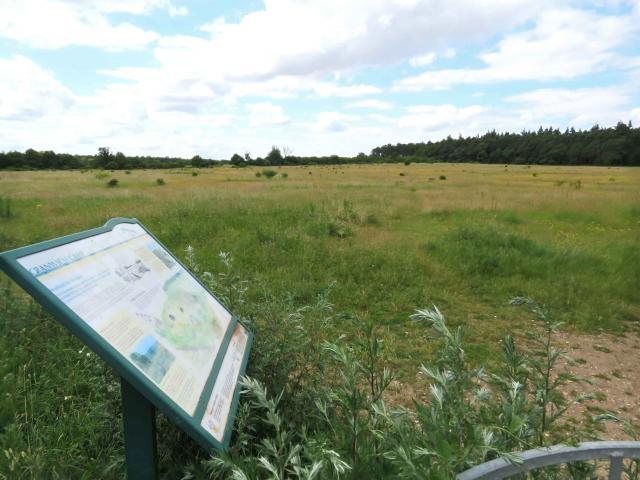
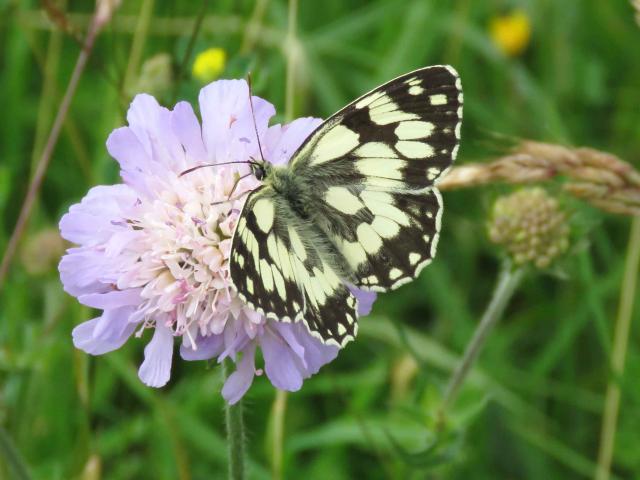
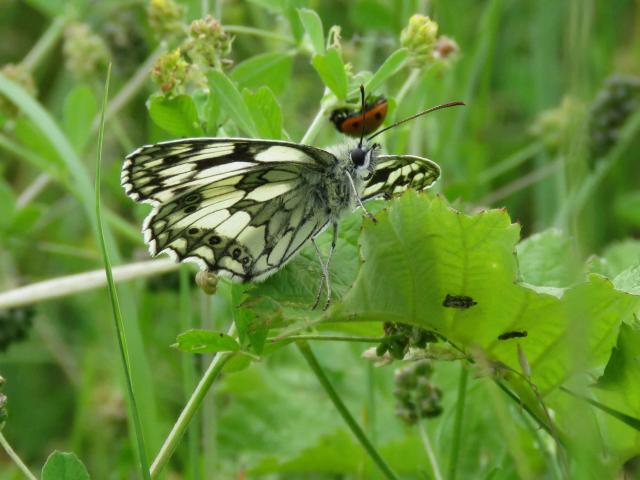
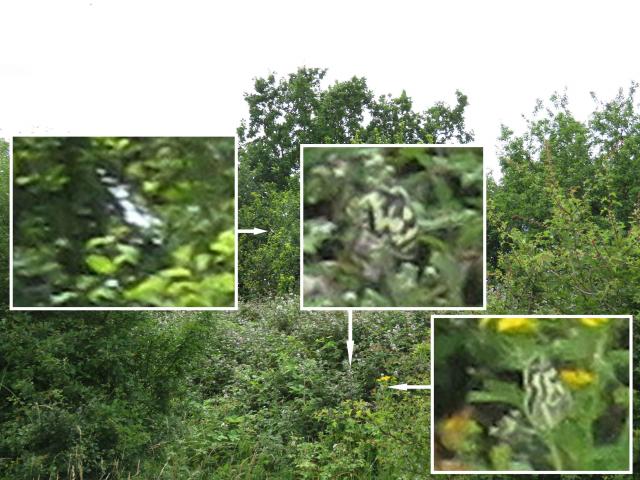
Cranwich Heath 7th July 2019 Field Trip Report
Sixteen of us gathered at Cranwich Heath on a very pleasant July morning - 20⁰, mostly sunny and a light breeze. There were a lot of butterflies flying near the car park and further up towards the wood – Meadow Brown ,Small Skipper, Small Copper, Small Heath and Ringlet in very large numbers, plus good numbers of Red Admiral, Large and Small White, as well as sightings of Comma, Brimstone, Speckled Wood, Painted Lady and fly-by’s of White Admiral and Silver-washed Fritillary. Sadly, our target species, White-letter Hairstreaks did not seem to have emerged – the Golden Rod on which they usually nectar was not in flower yet. We then moved on to the Heath itself. It was an absolute picture of wild flowers, with Kidney Vetch much in evidence. As well as the usual massive numbers of Meadow Brown, Small Copper and Small Heath we found a very good selection of day-flying moths, notably Brassy Longhorn, Straw-barred Pearl, Oblique Striped, Forester and Five-spot Burnet spp. We owe much thanks to Sue Pennell, whose knowledge of the site and its inhabitants were absolutely invaluable.
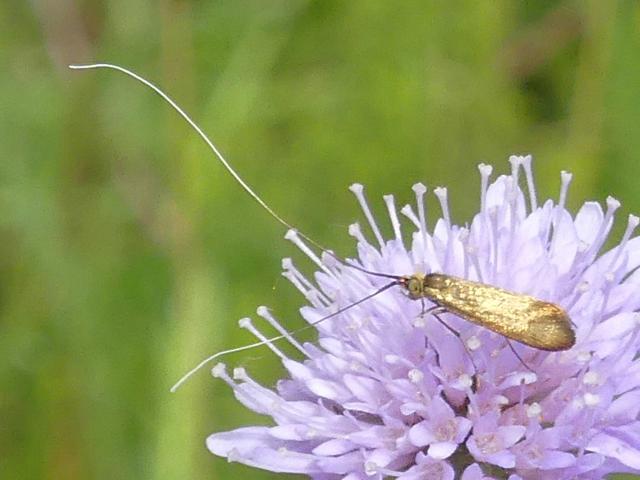
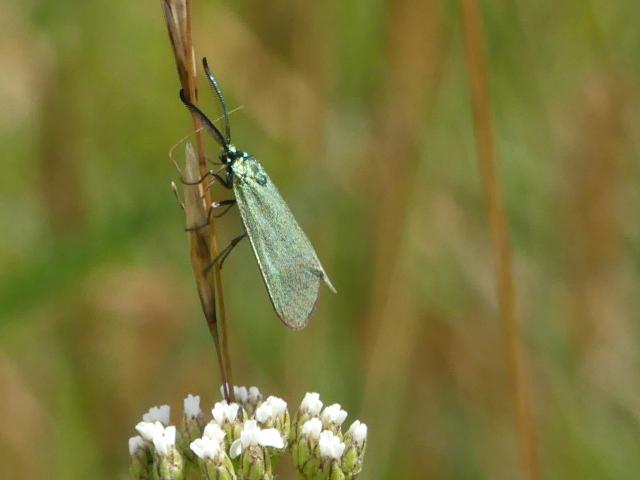
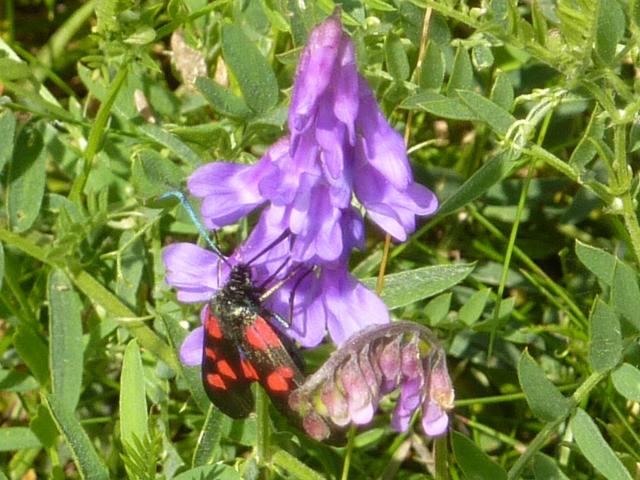
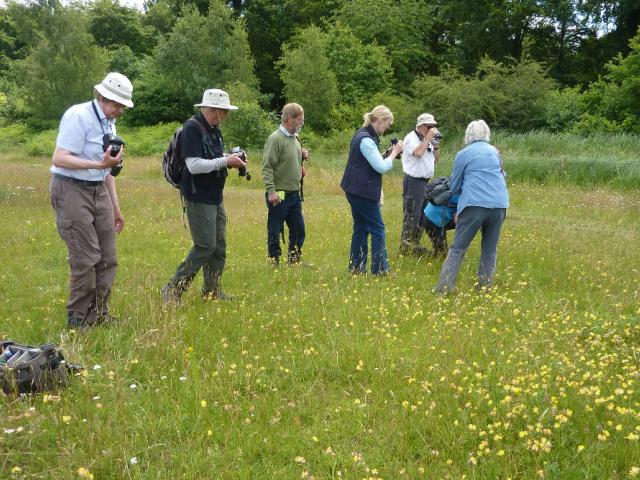
Moth Event At Weeting Heath 3rd July 2019 Report
On Wednesday 3rd July Butterfly Conservation, in conjunction with Norfolk Wildlife Trust (thanks James and team) opened several moth traps which had been placed out around the reserve at Weeting Heath in the Brecks the night before. Unfortunately clearing skies made for a cool night so catches were not as good as they could have been, though the MV light set outside the reserve centre was thankfully pretty busy. A good crowd was in attendance and were treated to several Beckland specialities including a fair selection of scarce micro moths, a full list of which should be posted here shortly. Many of us then moved over to Cranwich Camp but the Small Blues recorded there a couple of weeks previously had vanished and day fling moths were a bit limited.
Once again many thanks to James Symonds and his team for hosting the event and Sharon Hearle, BC’s regional officer for putting out the traps the night before.
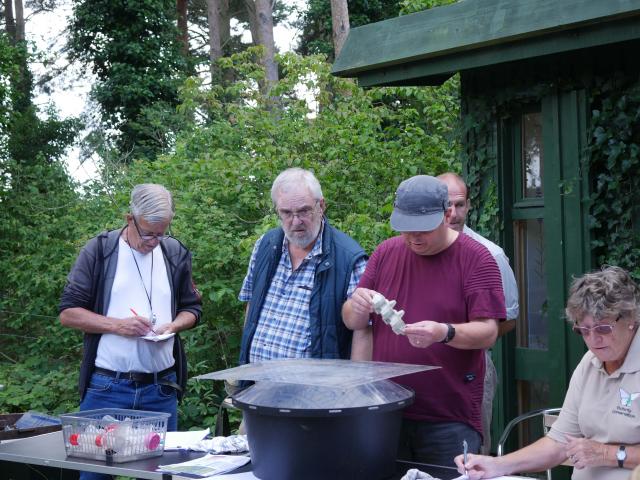
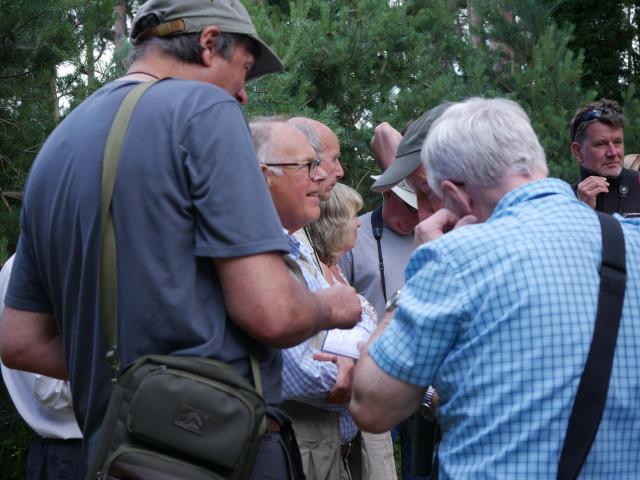
Report of moths recorded
pdf 185.41 KB
Moth Event at Pigney's Wood 26th June 2019
List of moths recorded
pdf 148.26 KB
Kelling Heath 19th June 2019 Field Trip Report
Ignoring an unpromising weather forecast for Wednesday 19th June, 6 members joined John Wagstaff and myself to look for Silver-studded Blues on Kelling Heath. For once there was little wind, it was overcast but warm, ideal for photographing this species. There were plenty to be seen, either nectaring or basking. We saw mainly males but there were a few females and even some mating pairs. John gave us a very interesting tour, explaining the management regime carried out through the Trustees. The whole heath looked in excellent condition and the butterflies are continuing to spread into new areas. Apparently elsewhere in Norfolk that day there were heavy showers but North Norfolk often has its own microclimate and we were lucky on this occasion
Report by Judy Dunmore
Photos by Derek Longe
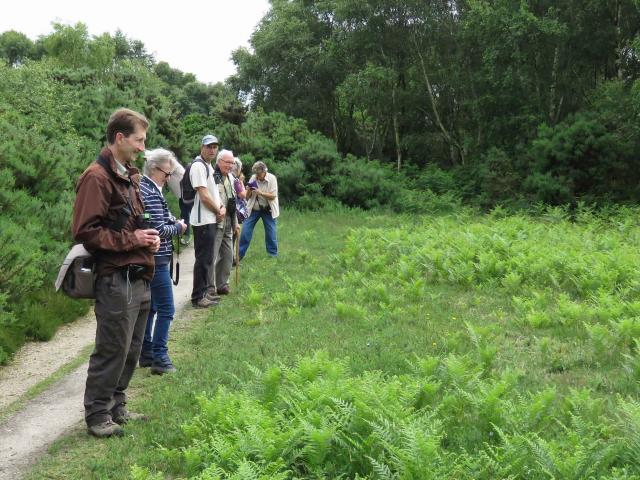
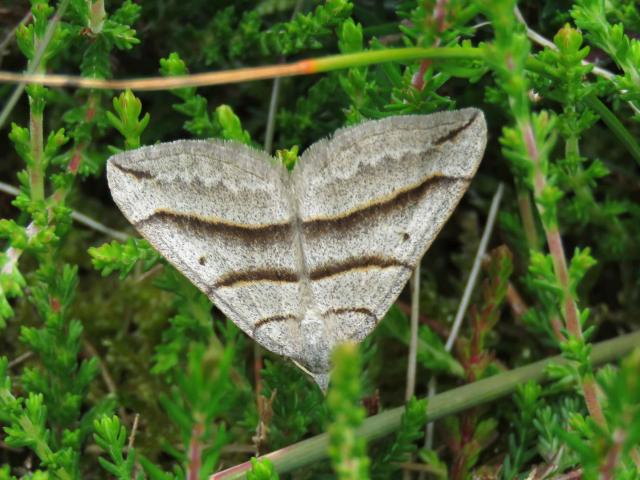
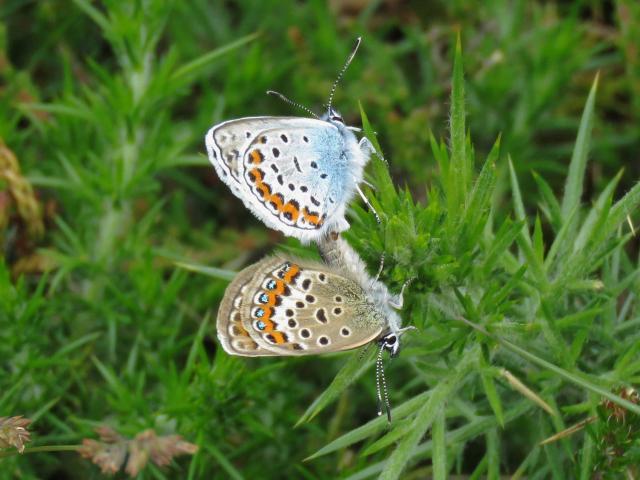
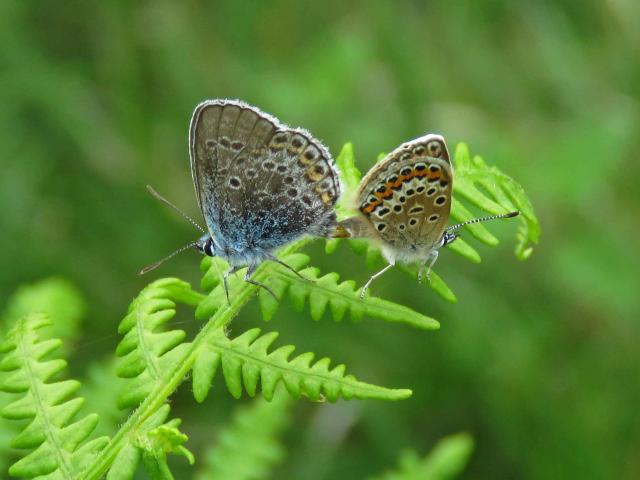
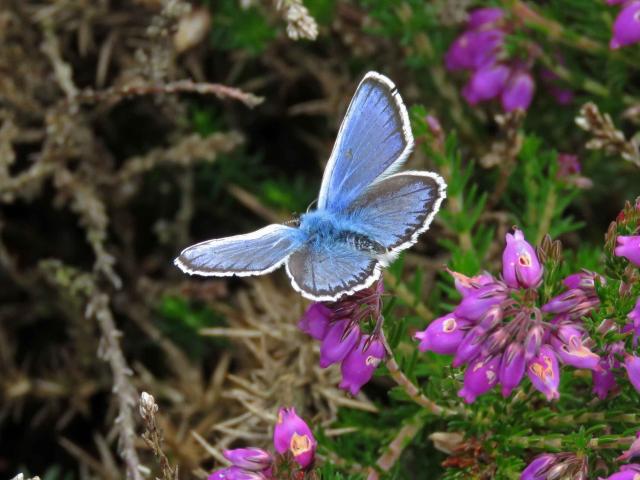
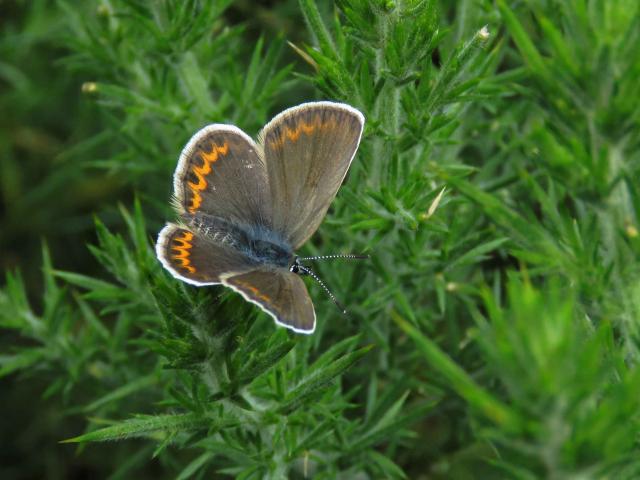
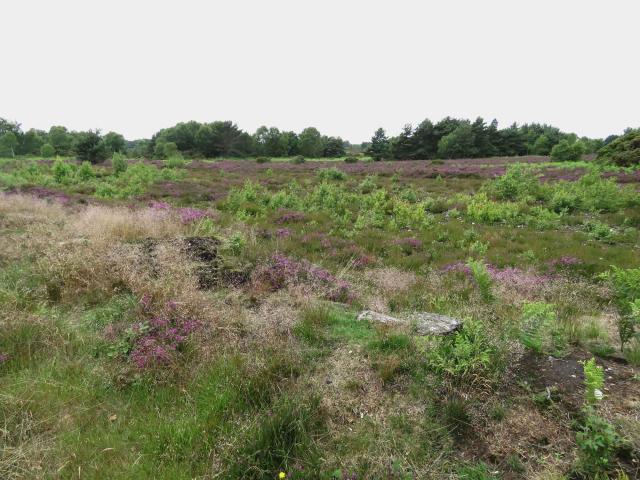
Purple Emperor now the 37th species in Norfolk
Report 16th June 2019
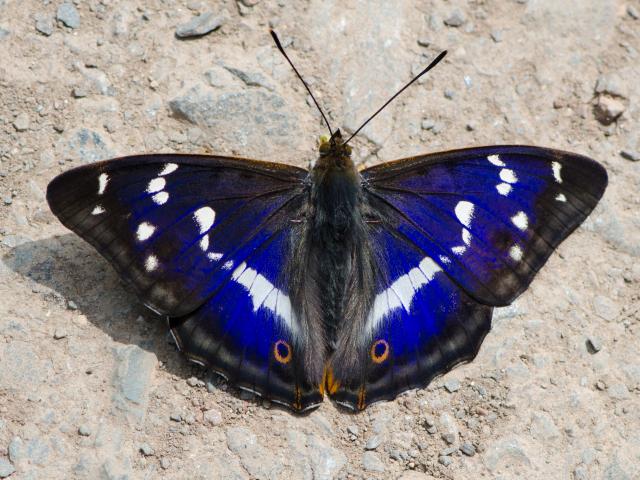
The last known Purple Emperor colony in Norfolk was at Foxley Woods near Bawdeswell (subsequently bought by NWT who have worked hard to restore it as a nature reserve ). Our last formal county record before the Purple Emperor’s extinction was in 1961 at Foxley. It is believed to have died out there in the early 1970s following some adverse woodland habitat management. There are unofficial reports of the felling of its “Master Tree” (used by males to compete for breeding partners I believe) according to County Recorder Andy Brazil the colony was probably destroyed by forestry operations and/or pesticide use, they used crop-sprays by plane against moths and cut down and replaced habitat with conifers.
We’ve now had 8 confirmed records across five different sites this decade and its been seen consistently for the last three years in a row. The Emperor’s first reappearance was actually back in 2011 at Felbrigg Hall (NT). Then in Sheringham Town garden in 2014 and Sheringham Park (NT) consecutively 2016, 2017, 2018, Beeston Common (a SSSI reserve on opposite side of the road) in 2017 and 2018 and lastly Holt Country park in 2018.
Norfolk has 36 resident species of butterfly currently. Now that we’ve had multiple confirmed sightings, three years in a row, all in the same vicinity it seems indicative of residency and they are now believed to have recolonised the area, which was historically part of their UK range. Given the consistency and pattern of the records, our county recorder Andy Brazil has confirmed it will now be added to the county species list, making the Purple Emperor the 37th species listed as currently breeding in the county. (Andy: “I'm happy to count it as a Norfolk species (however it got here). It would be 37th currently breeding in the county.”). Historically we have had 47 butterfly species breeding in the county but no more than 45 at the same time.
Numbers remain extremely low however and the butterfly is notoriously elusive. Sheringham and Beeston, where the past few years’ sightings have been made, are very well visited areas of North Norfolk during the butterflies peak flight time, which is likely why these sightings have happened in that location. Intriguingly, in Norfolk the Purple Emperor’s flight period appears to be several weeks later than that in the Purple Emperors’ current strongholds further south. Last year our very first report was after everyone else's last sighting. We don’t know why this is.
There is much mystery and debate surrounding this elusive butterfly’s reappearance. Some believe it’s a recolonization, some an illicit re-introduction, yet others believe its been here in extremely low densities all along and not been spotted due to its oak canopy-loving habits or else misidentified as a White admiral, which shares the same habitat. The White Admiral is similar in appearance to “A. Iris”, but smaller, lacks the distinctive orange circular markings and the lack the male Emperor’s famous purple iridescent sheen. According to BCS County Recorder Andy “Everything points to a colony in Sheringham slowly spreading out to Beeston and Holt. It might spread to other suitable woodlands over time. As to how it got to Sheringham… there is a history of releases, but it's probably natural - it has been expanding its range, possibly thanks to better wood management.” The Purple Emperor is found in neighbouring Suffolk and Cambridgeshire (Wood Walton Fen). He points out that The White Admiral and Silver-washed Fritillary, also woodland loving species, have both expanded locally over similar timescales.
The best area to spot them is likely to be Beeston common, simply because its less wooded. However, according to Andy “It's also been reported from the Suffolk border and there's a definite possibility of more sightings down there.” Last year’s Holt sighting is also promising. There is a large area of Sallows in one section of the park so breeding habitat does in theory exist.
We really need to find out more about how and where this mysterious butterfly is re-establishing itself in the county and any confirmed sightings would be invaluable in tracking this elusive species recovery progress. Its possible that the Purple Emperor may be gradually starting to recolonise surrounding areas too so it could potentially be found in other suitable Norfolk woodlands (containing a mixture of mature Oak and Sallow) at extremely low densities. In addition to the North Norfolk Coast area, potential areas to search include in Mid and West Norfolk where it was formerly resident and potentially on the Suffolk or Cambridgeshire borders (from the Emperor’s current respective bases in Theberton Woods, Woodwalton Fen) so we need naturalists and walkers alike to be mindful of the possibility, be on the lookout, and help us with the hunt right across the county.
The Purple Emperor holds a uniquely special place in both county and butterfly folklore. After an absence of fifty years, its simply wonderful to this magnificent species resident in the county once again and I only hope it continues to regain its former haunts and goes from strength to strength.
Resources
-Andy Brazil, County recorder
-Liz Goodyear and Andrew Middleton's detailed article on the county (and wider east Anglian) PE history below which mentions earlier one off unconfirmed sightings also in West and Mid-Norfolk (Kings Lynn, Foxley and Dereham area) http://www.dispar.org/reference.php?id=91#Norfolk
-My blosg http://www.kiri.uk/nature-photo-blog/laying-the-ghost-of-iris-to-rest and http://www.kiri.uk/nature-photo-blog/the-colour-purple
-2018 EDP reports
Beeston sighting https://www.edp24.co.uk/news/environment/rare-butterfly-spotted-at-sheringham-park-in-norfolk-for-third-consecutive-year-1-5631387
Third consective NT Sheringham sighting https://www.edp24.co.uk/news/environment/rare-butterfly-spotted-at-sheringham-park-in-norfolk-for-third-consecutive-year-1-5631387
-2018 record video:
“The Purple Emperor was seen at approx 10:20 on Wednesday 18th July at Sheringham Park. Footage and copyright Andrew Middleton. Seen by Liz Goodyear and Andrew Middleton. It was seen to fly from the Sallows and alight on an oak tree. The video shows its proboscis probing the leaves for aphid honey-dew. “ https://www.facebook.com/liz.goodyear.5/videos/1795532417196074/?t=37
World Swallowtail Day at Wheatfen 9th June 2019 Field Trip Report
We thoroughly enjoyed World Swallowtail Day at Wheatfen and meeting the many of you who came along, our BC stand was kept busy chatting to you all! The "Swallowtail meadow" viewing area proved popular with visitors and Swallowtails alike (flower bunches were added due to the Flag Iris being late in its flowering). The Swallowtails were highly active, flying around the area, occasionally coming down to the nectar bait allowing people to get close snaps.
With guided wildlife walks all day and a talk in the Gazebo by our very own Andy Brazil, it really was a day out to remember!
Photos by Derek Longe
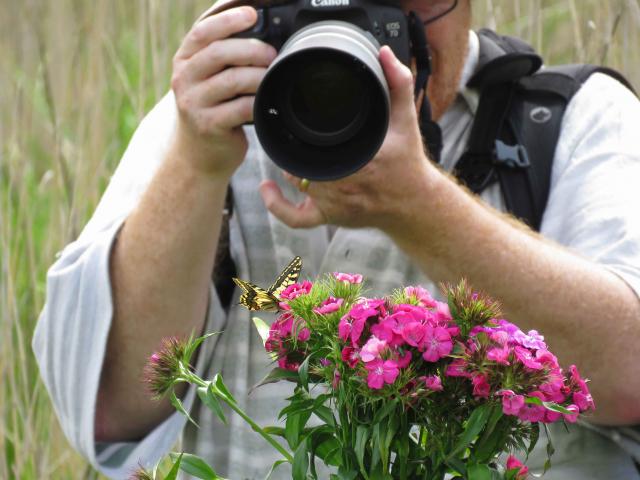
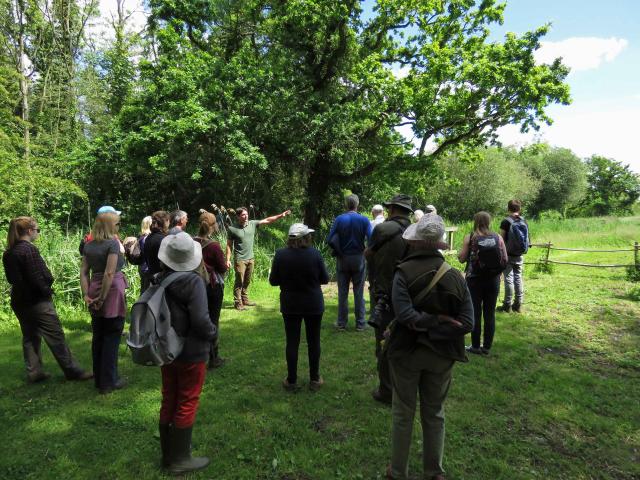
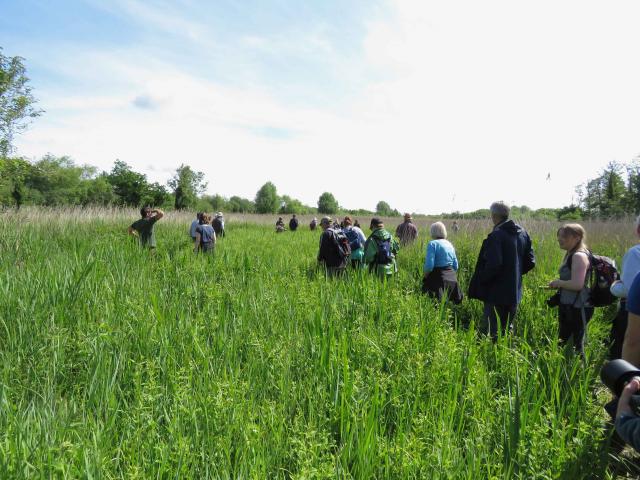
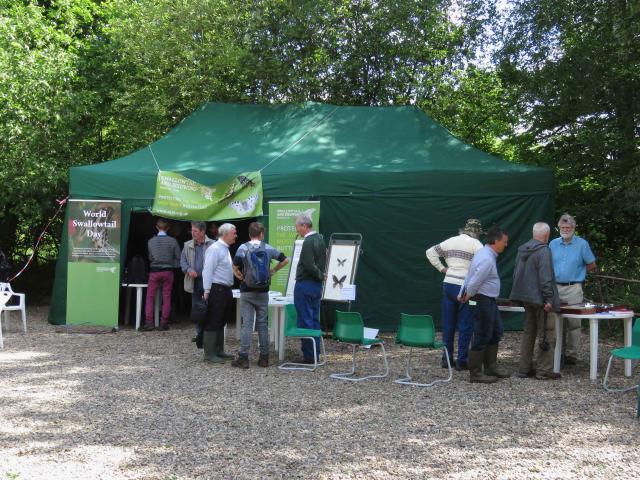
Grimes Graves 5 June, Weeting Heath and Cranwich Heath 3rd July Moth events Report
Membership of Butterfly Conservation often entitles you to visit less-known sites where the expectation is for moths to be in the traps which you’re unlikely to get in a trap in your garden. Norfolk Branch of Butterfly Conservation visited Grimes Graves and Weeting Heath in the Norfolk Brecks this week as part of our #mothsmatter efforts this year and were certainly not disappointed. Sharon Hearle from BC had agreed with English Heritage to put out 4 traps at Grimes and Norfolk Wildlife Trust put out their fixed trap at Weeting Heath to be opened later so there was plenty of variety and some very special Breckland moths for the 25 or so who attended. We had several Cream-spot Tiger moths and a couple of Reddish Light Arches at Grimes, with several Clouded Buffs and Pale Oak Beautys at Weeting, shown below in that order. We rounded off the day with a very special trip to Cranwich Heath, of which more elsewhere no doubt.
Photos by Greg Bond
